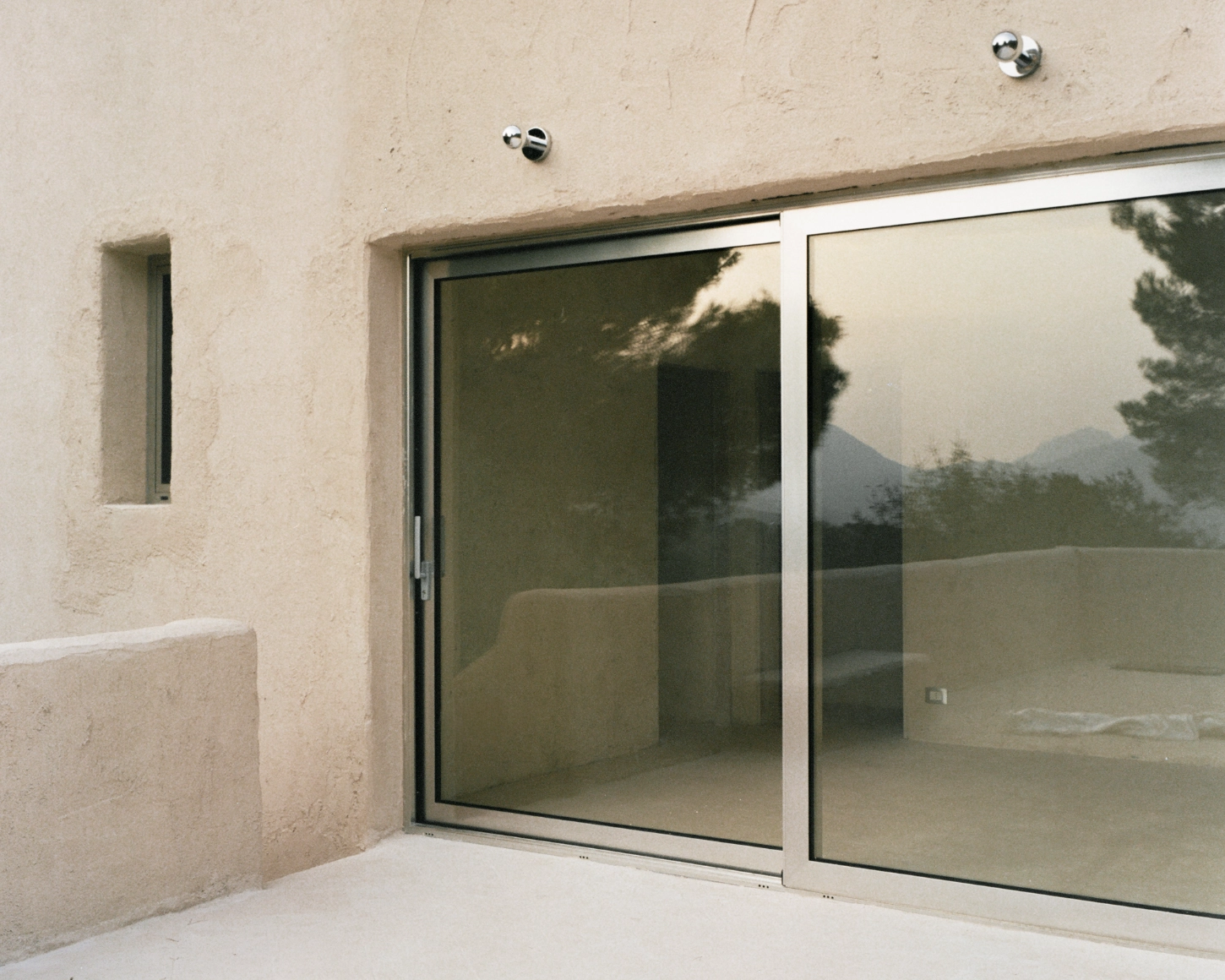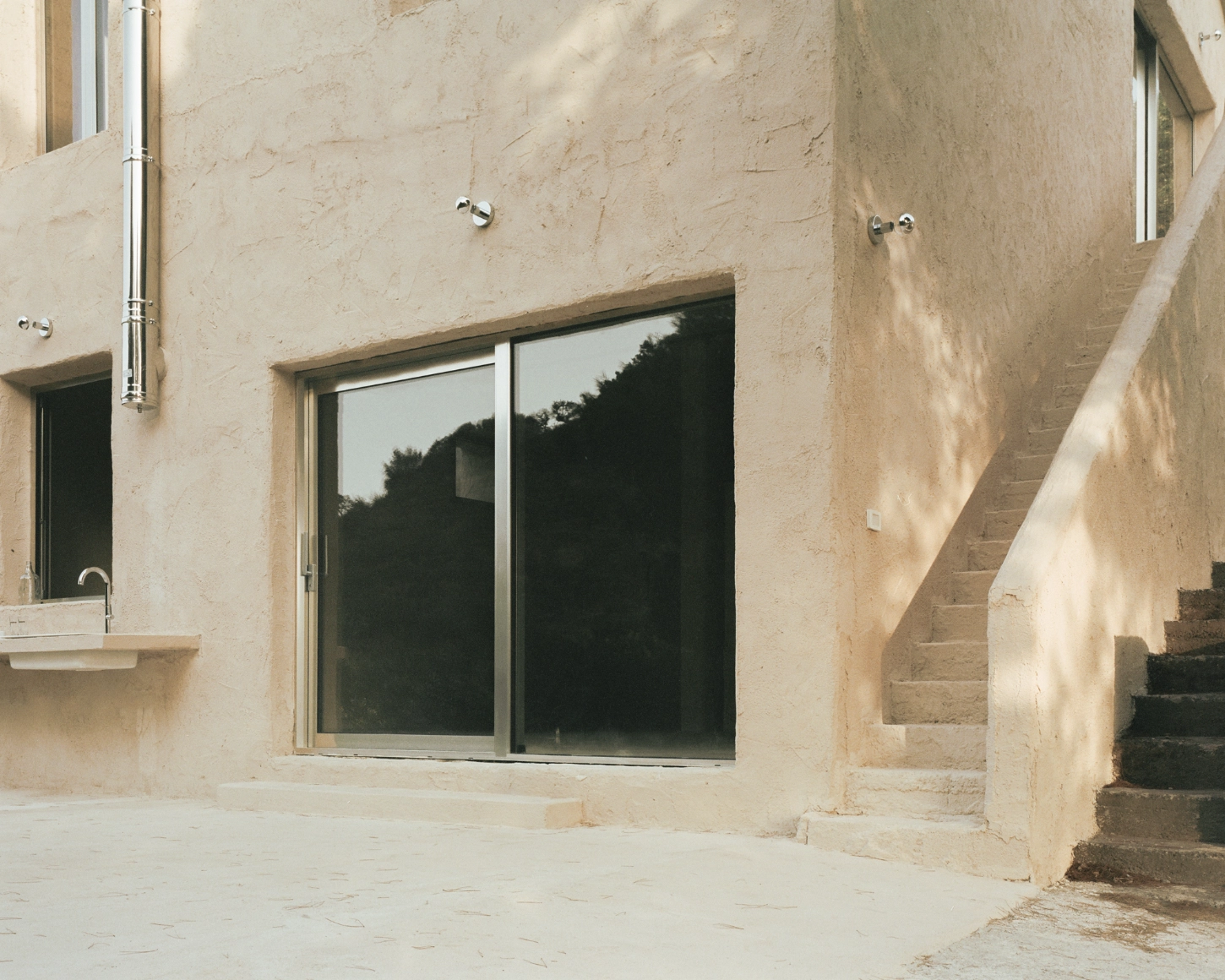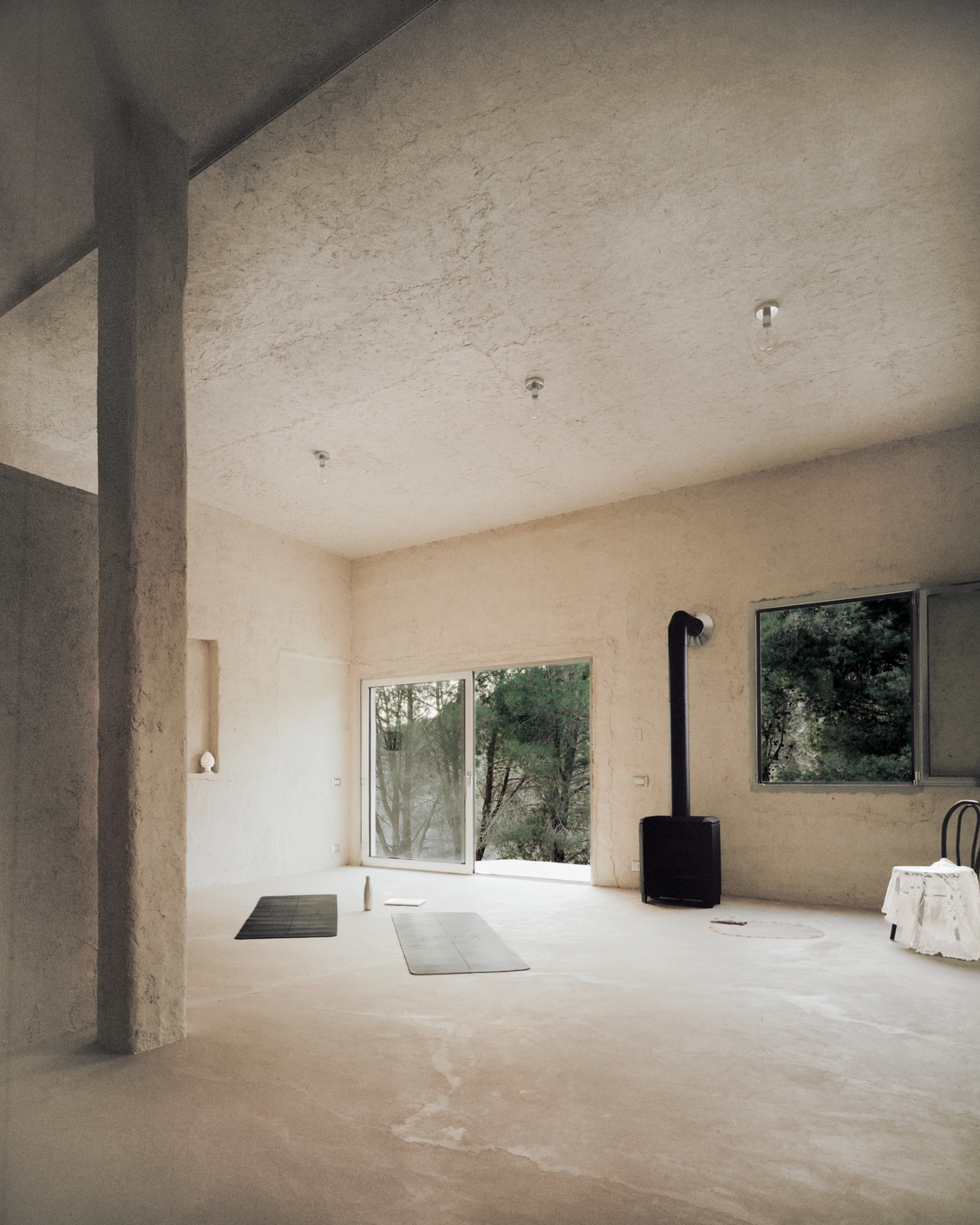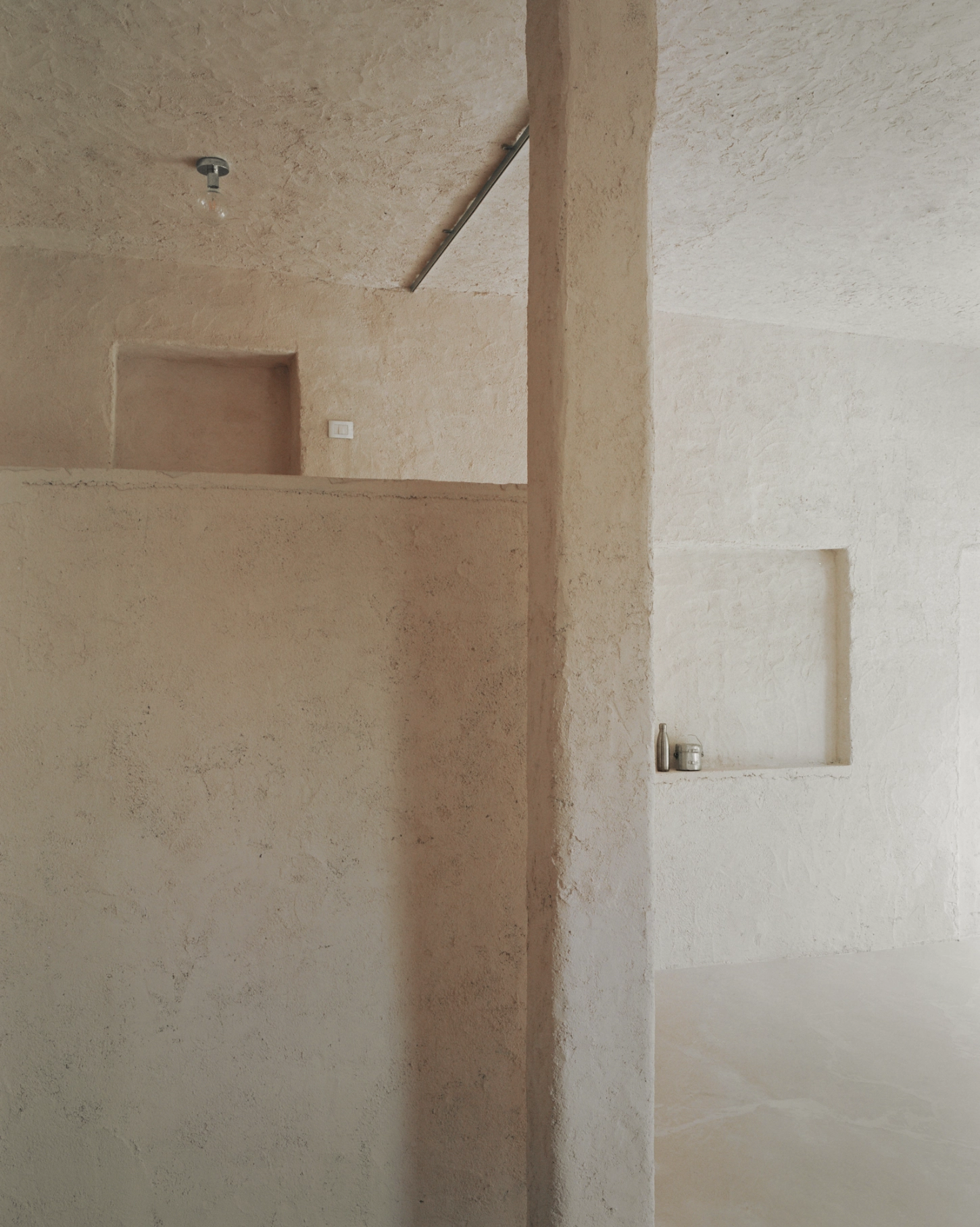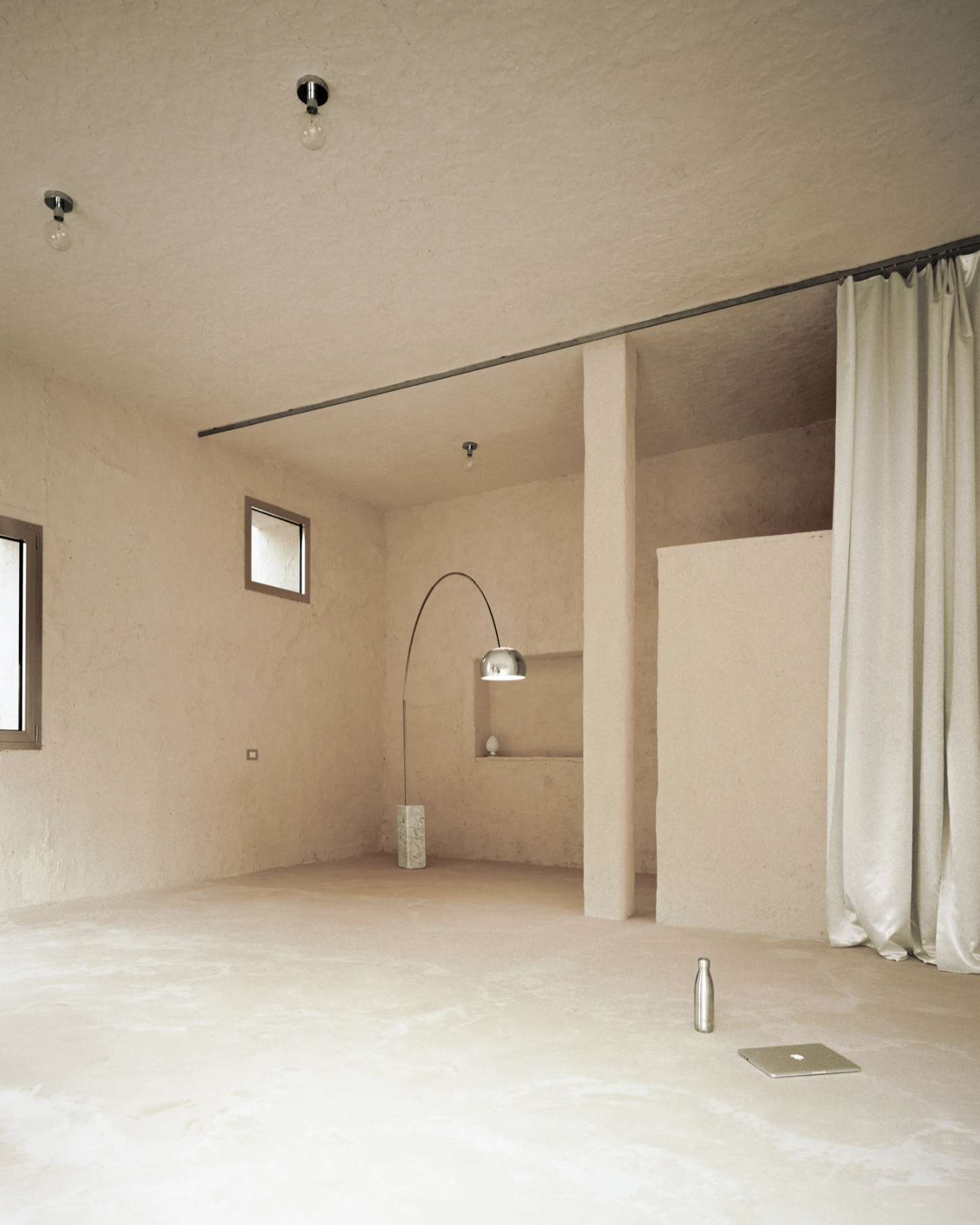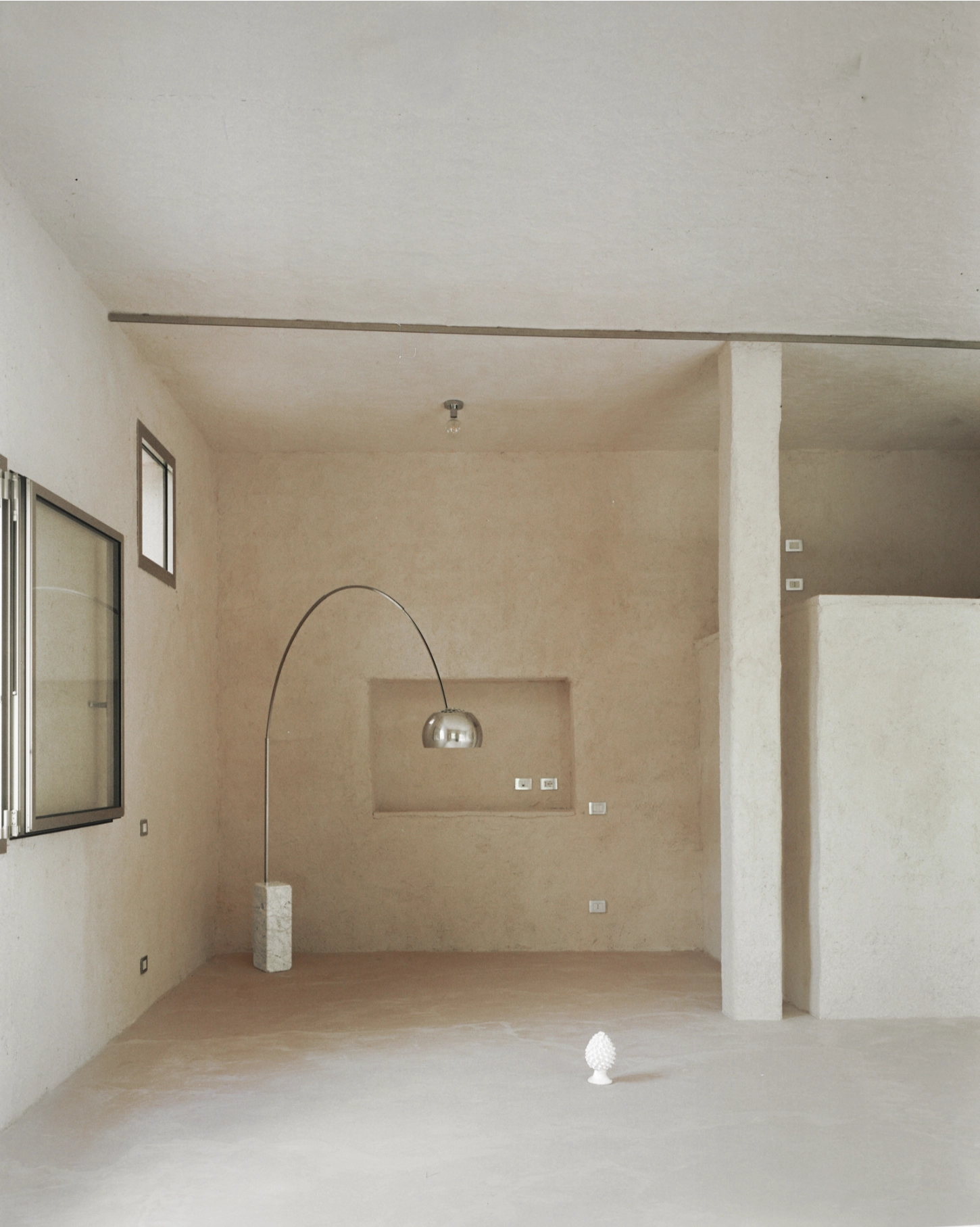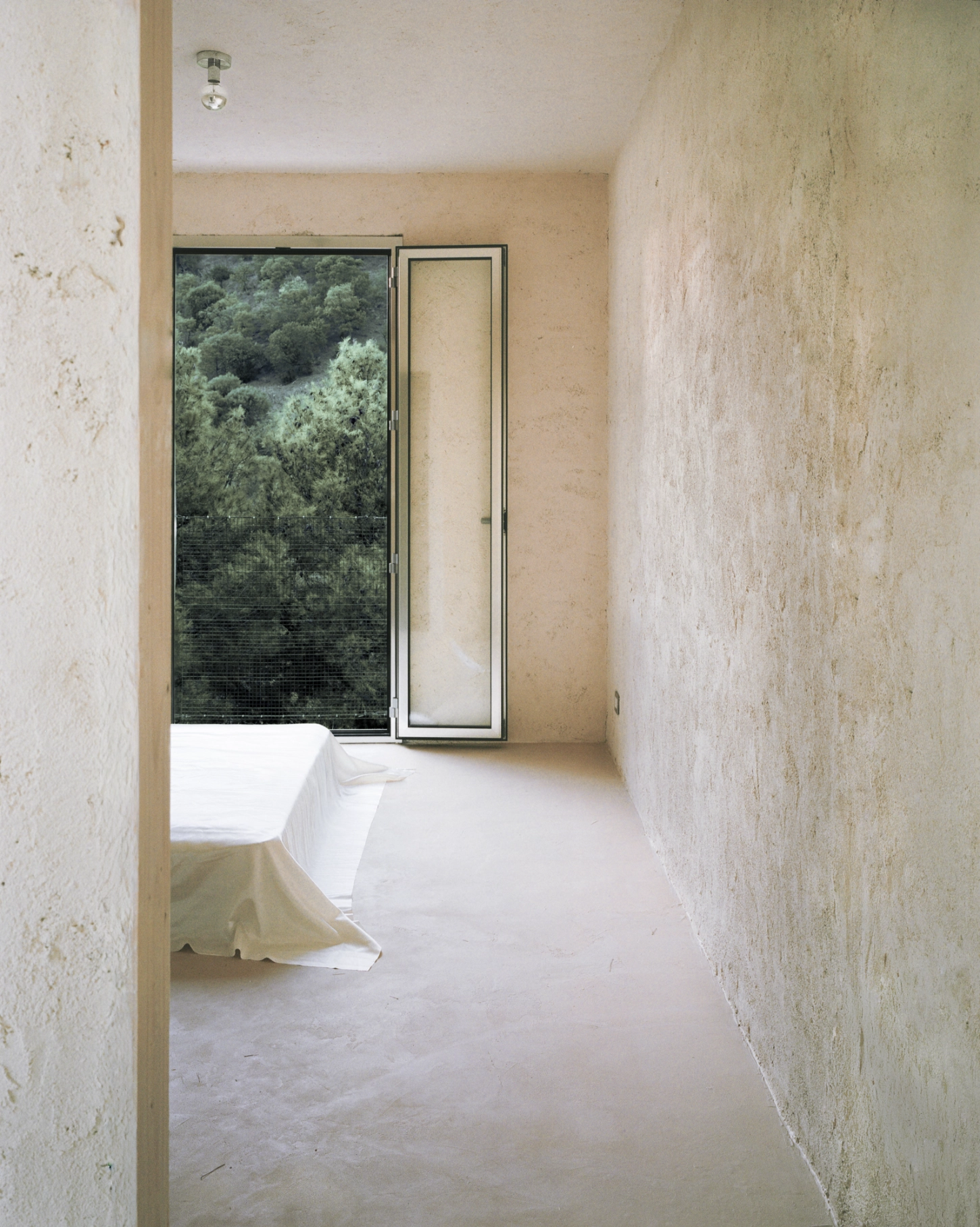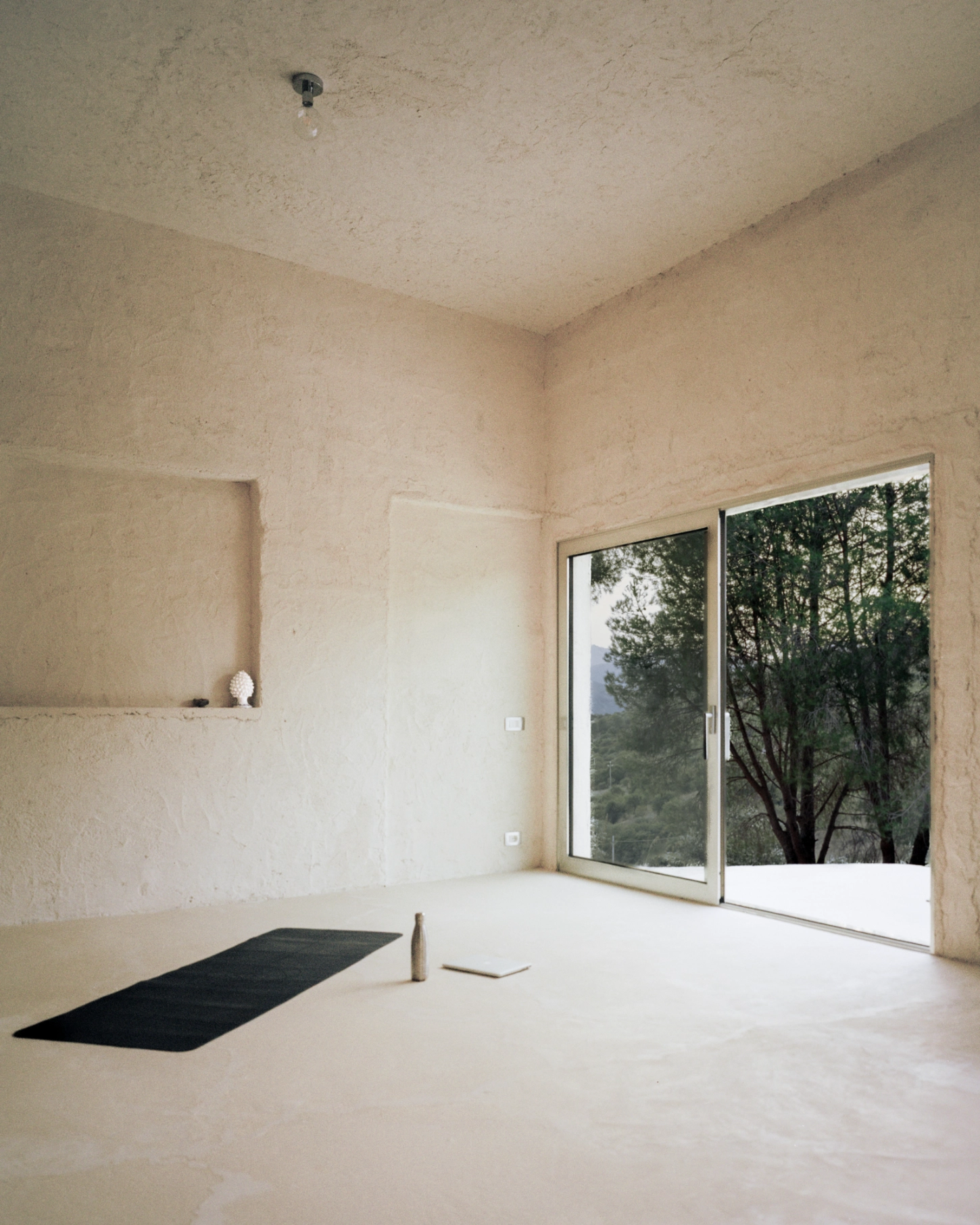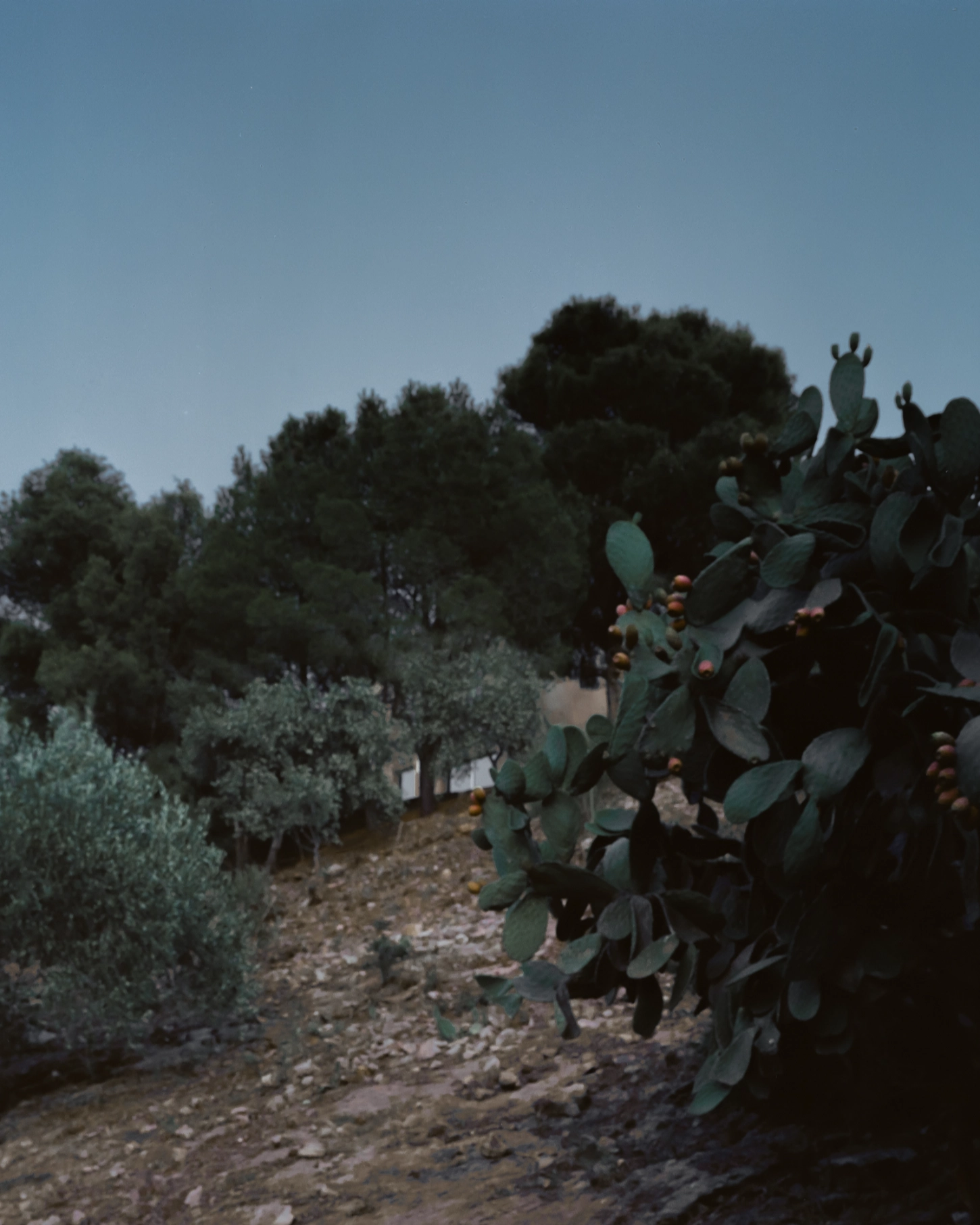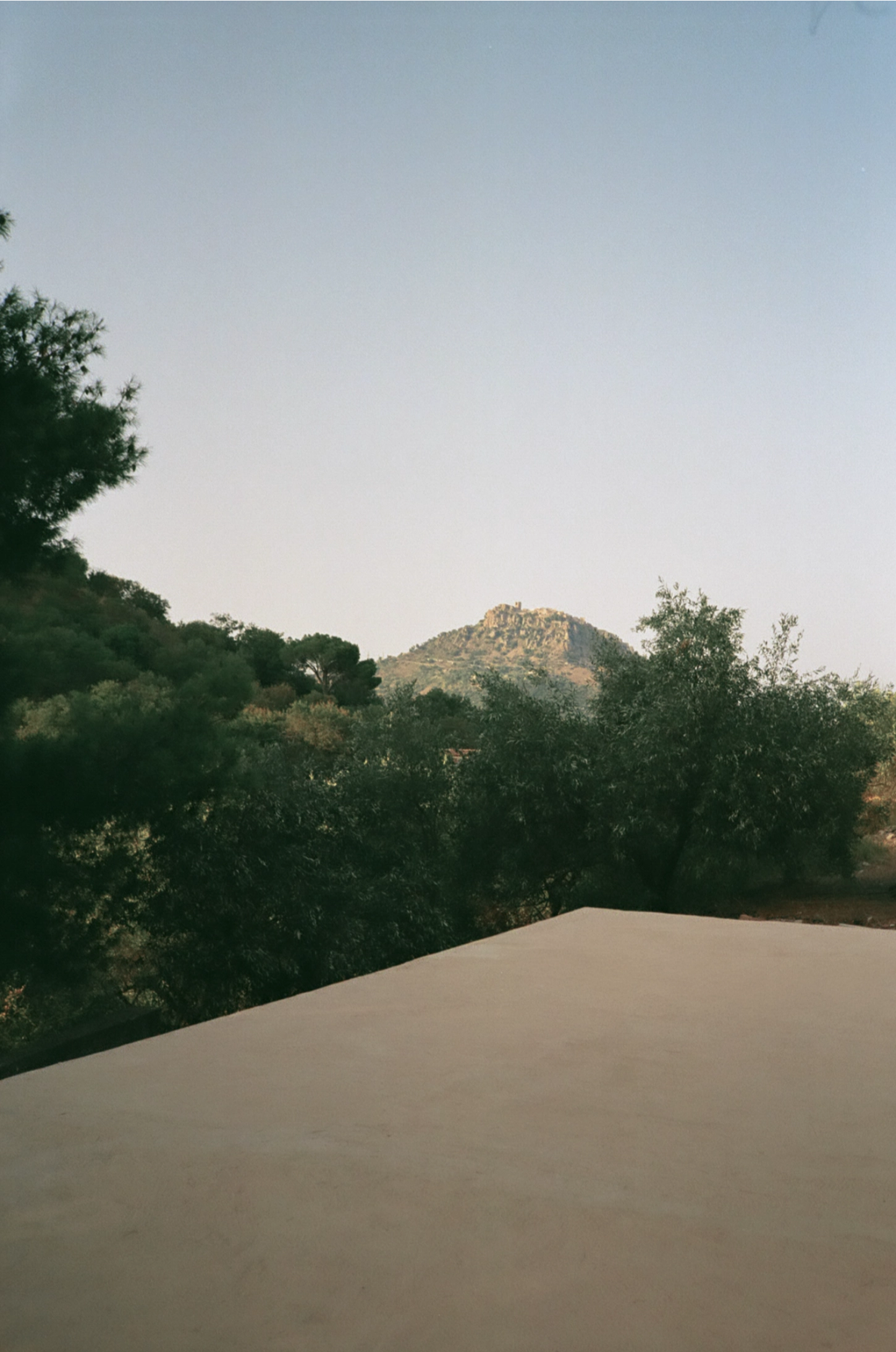Holistic Retreat Centre by Matteo Corbellini is a project defined by raw material presence, tactile precision, and an almost primordial relationship between structure and landscape.
A few kilometres from the Sicilian coast, facing the Eolian islands, it is nestled within the Madonie Natural Park — a terrain of rock, olive trees, ficus, ash, and the thick scent of macchia mediterranea.
The project begins with an existing ruin: a stripped 1970s house. Instead of rebuilding, the structure was carved and hollowed, echoing Gordon Matta-Clark’s radical incisions. Light and air cut through the mass, transforming the ruin into a monolithic shell that merges with its surroundings.
The new form is made entirely of lime and hemp, lightly tinted with local earth. Thick, dense, monomaterial. Walls, ceilings, and floors share the same body — raw and uncoated — carrying the visible marks of labour: spatulas, trowels, fingertips, overlapping layers. Every surface is a physical record, where structure and craft are inseparable.
Corbellini took part directly in shaping, mixing, and layering the material. Construction and design became one act — an intimate conversation between hands, matter, and resistance. This slow, physical process recalls Wolfgang Laib’s quiet accumulations more than conventional building.
Metal details and light curtains soften the rawness, while a central fireplace anchors the space like an ancient gravitational core. All rooms are cast from the same material, without functional hierarchy. Even the two kitchens — one inside, one outside — are reduced to essential slabs, emphasizing continuity.
As layers of matter accumulate, the original frame remains legible, coexisting with new surfaces in quiet tension. Nothing is perfectly aligned. Nothing symmetrical. Instead, the project finds order in controlled disorder, precision emerging from imperfection.
The space is not meant to be merely seen — it is to be moved through, felt, inhabited. Material densities shift, light thickens or thins, surfaces carry temperature and scent. This is architecture as physical thought: a rejection of digital smoothness in favour of something slower, heavier, and profoundly human.


